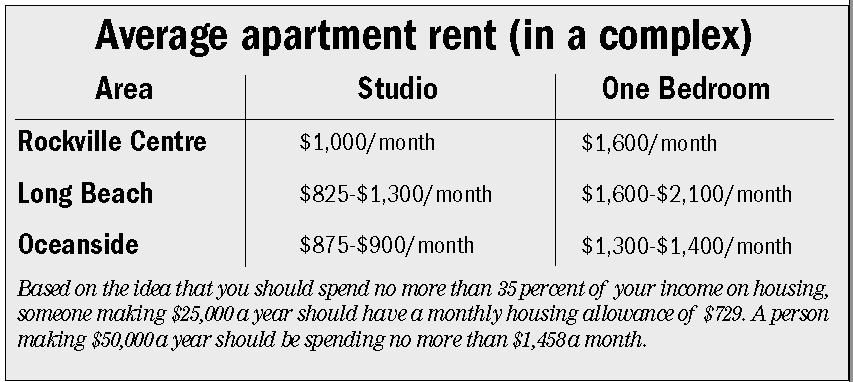Leaving Long Island
Discouraged by the lack of affordable housing, young people are moving elsewhere
Part one in a series, “Plugging the brain drain.”
For the past decade, Long Island has been losing college graduates and young professionals. The high cost of living and lack of affordable housing has forced them to leave the area in droves.
The phenomenon is known as the “brain drain.”
In 2000, 12.86 percent of the population of Long Island was between ages of 25 and 34. By 2008, that had dropped to 9.98 percent. According to the Long Island Index, 22 percent of the population of 25- to 34-year-olds left Long Island in that eight-year period.
“Long Island sends kids away to these great universities, and then they leave,” said Chris Capece, the development director for AvalonBay Communities on Long Island. “They don't come back.”
The explanation is twofold: First, the cost of living on Long Island is too high for young people to afford. Second, even if they could afford it, many young people don't want to live here.
“When a kid's coming out of school, he doesn't jump in and buy a single-family home. It just doesn't happen,” said Capece. “So what's happening is that there are other places where a 23-year-old can get a one-bedroom apartment and live in it. Or a two-bedroom flat and split it with a roommate. That does not exist here on Long Island, and it's in other places, which is why people are moving to other areas.”
What rental housing there is on Long Island is expensive, by any measure. In 2000, about 55 percent of rentals on the Island cost less than $1,000 a month. By 2006, only 23 percent did. And by 2006, 38 percent of rentals cost over $1,500 a month.
According to Ann Golob, director of the Long Island Index, rentals account for only 17 percent of Long Island housing. In Fairfield County, Connecticut, 28 percent of housing is rentals, and in Westchester County, 37 percent. “We have not built the number of rental units that are typically what a young person can afford,” said Golob. “So it makes us much less affordable. The numbers are very striking.”
The fight for affordable housing
Other than a few isolated pockets in places like Rockville Centre and Long Beach, there is simply not much rental housing on Long Island. “It has to do with ... how Long Island has grown,” said Golob. “Where would you be able to put more rental housing?”









